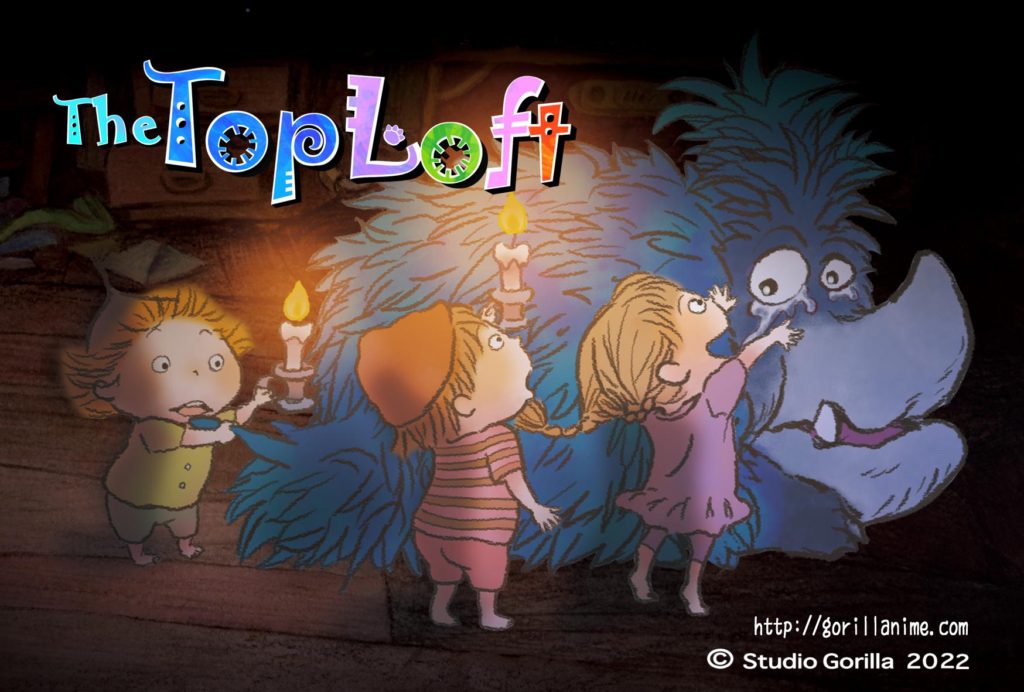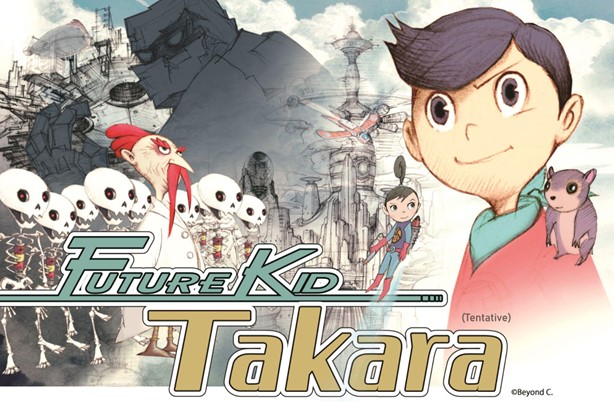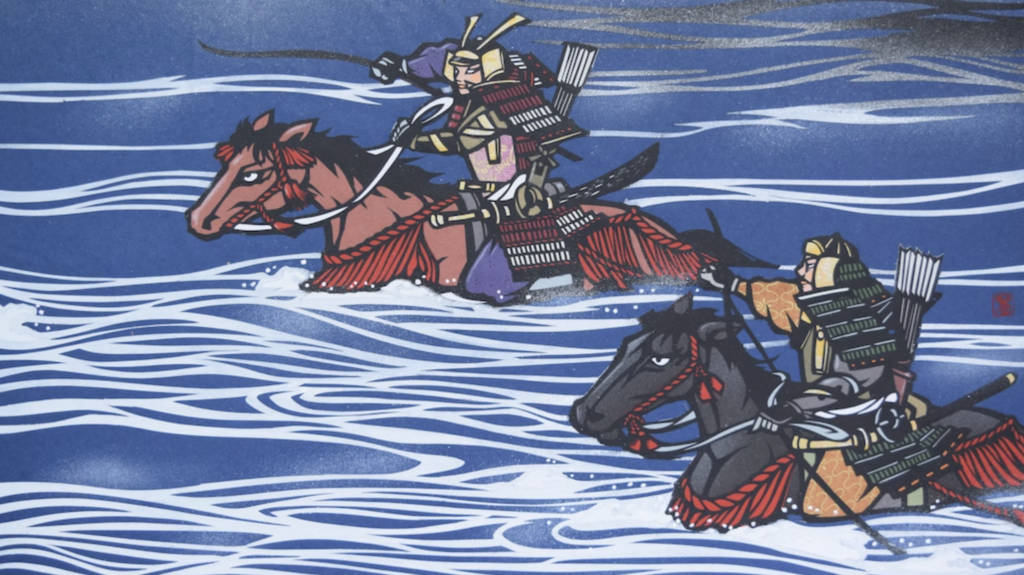Picona Creative Studio is an anime studio focused on 3DCG animation. Known in the industry for using cell-like 3DCG, they have worked on a wide range of popular anime series, such as Aikatsu! or Chainsaw Man.
Currently, the studio is holding a crowdfunding campaign on Kickstarter to finance their next series, Samurai Pirates.
The crowdfunding is part of a larger initiative supported by JETRO, which you can read more about here.
In the context of this campaign, we had the opportunity to meet with Picona’s director Mr. Ken Yoshida, who is also the creator of Samurai Pirates.
In this interview, we will have the opportunity to learn more about Ken Yoshida’s vision, his approach to animation, and the works of Picona Creative Studio.
First of all, can you tell us what made you interested in CG animation?
Ken Yoshida: I had the opportunity to watch the short film called “Tin Toy“, produced by Pixar. That’s what got me interested in the possibilities for CG expressions. It led me to go study CG animation at the Digital Hollywood school.
I believe you started your career at Konami. Were you already working with CG then, or did that come afterward?
Ken Yoshida: When I joined Konami, they had a 3DCG training as part of the onboarding training at the company; at Konami School. But at first, I joined Konami as a graphic designer for card games.
That is how I started my career as a new grad at Konami.
What card games did you work on?
Ken Yoshida: Of course, since it’s Konami, I was involved in their main title, Yu-Gi-Oh! but there were also other card games made with Shueisha. I was working on the development and design of these games.
After Konami, you worked at CGI studio IKIF+. Can you tell us about your work there? Is it there that you started your professional work with CG?
Ken Yoshida: Well, actually, a lot of things happened. When I was working at Konami, I became interested in video creation, especially animation. That is why I decided to quit.
However, I also thought it would be very difficult to do the production and make all the drawings on my own. But when I saw those Pixar short films, I thought it might be possible to do it by using CG animation. That’s why I went to study CG animation at Digital Hollywood University.
During that time, I did part-time work at IKIF+ and had the opportunity to participate in the movie Doraemon Nobita’s Dinosaur (2006). After I graduated, I continued studying at Digital Hollywood University’s Graduate School of Digital Contents. And it was at that time I decided to create my own company. I studied in that graduate school because they had a joint program with UCLA on Hollywood-style film production. I joined that program, although it was a bit complicated.
So, Picona was created when you graduated from Digital Hollywood University?
Ken Yoshida: After graduating from Digital Hollywood Graduate School, I started my graduate course at Tokyo University of the Arts. It was right about the time they started accepting students specialized in animation. While I was still a student at the Tokyo University of the Arts, I created my company, “Picona”.
Was there already a CG course at the Tokyo University of the Arts?
Ken Yoshida: No, there wasn’t. There was a 2D animation and stop-motion course. What I studied was a bit different, more like researching “how to create things in CG.” Nowadays, they have CG courses for gaming and animation majors, but there weren’t any when I studied there.
About Picona, can you tell us what objectives you had in mind when you created the company?
Ken Yoshida: Most importantly, I wanted to do my own animation work, being able to realize the ideas that I have in my head and create original IPs.
And how many employees do you have right now?
Ken Yoshida: We have 15 employees, including me. We have two studios, one in Tokyo and another one in Fukuoka. The Fukuoka studio opened in 2019.
Before producing its original work, Picona has been making a lot of CG animation for the Aikatsu! series. Can you tell us about the relationship between Picona and the Aikatsu! franchise?
Ken Yoshida: I think we started working on Aikatsu! in the third year after the establishment of the company. One of the companies had introduced the Aikatsu! projects, and we were given the opportunity to participate from the very first season.
Aikatsu! is a series about girls doing idol activities, with a lot of dancing scenes. At that time, using CG animation for dancing scenes was not common, but I think we were the first ones to do it. So in that sense, Aikatsu! was a pioneer and important work. Other scenes were drawn with traditional animation, but we used 3DCG for the motion and live scenes. Our client and the director of the series liked the characters’ facial expressions: even if it was in 3D, we were able to achieve good facial expressions. That’s why we stayed and got involved with the Aikatsu! franchise for a long time.
Picona was also involved in the production of Dorohedoro. Can you give us more details about your involvement?
Ken Yoshida: Dorehodoro was produced by MAPPA, with which we were already acquainted. The client appreciated our cell-look 3D, which is toon-like 3DCG animation. We did a lot of research to create a 2D-looking 3DCG. If you read the original manga of Dorohedoro, the drawings are very detailed, so we had to try hard to reach satisfying results. We were involved in the production from the beginning of the modeling; for instance, we did the character modeling of the protagonist, Nikaido. We studied how to express the details in the manga. Our modelers were heavily involved in the project from the prototyping phase, and we spent a lot of time on it.
Is it at that point you started to specialize in this kind of 2D-looking 3DCG?
Ken Yoshida: We started doing that before Dorohedoro. But after this project, our range expanded: we realized it was possible to add certain touches to project lines. Before, we were just trying to reach how to achieve picture-like 3DCG, but then we had the opportunity to study various techniques in this project.
And what do you think is interesting or attractive in this style of animation?
Ken Yoshida: In Japan, animation is first and foremost approached by drawings. The same thing can be said about Japanese manga. But if you take a look at Pixar’s works, the 3DCG is realistic. Adding very detailed textures is complicated and very time-consuming for 2D. But when you use 3DCG, you can shorten the time required because you can let the computer do some of the work for you rather than doing it from scratch. By letting the machine work, it’s possible to combine various styles and create something new. That’s what I find most interesting about this style.
However, this might be the Japanese interpretation of 3DCG, so I’m very interested to see how our international audiences would receive our style.
It’s true that when one watches Japanese 3DCG productions, they are very different from the American style. For example, the recent Slam Dunk: The First movie was made with a very Japanese style that you cannot find in Western films.
Ken Yoshida: I haven’t had the opportunity to see Slam Dunk yet, but I’ve seen some trailers. I was very impressed by what they did with the 3DCG work on Takehiko Inoue’s drawings.
Recently, Picona has been involved in another anime made by MAPPA, a very popular series with overseas’ fans, Chainsaw Man. You did work on the first episode too. Can you tell us more about your involvement?
Ken Yoshida: Because we had a long-standing relationship with Mappa from the time of Dorohedoro, we were called to participate in episode 1.
In Chainsaw Man, there was a big crowd of zombies. When you create this kind of scene with crowds, you usually do it with 3DCG. We were in charge of the zombie models. Chainsaw Man has some very strong 2D animation, but certain things are hard to make with 2D techniques, so we worked with CG.
We’re also currently working on various projects with Netflix, but some of those titles are still in production or haven’t been revealed yet. They will probably be announced during the year.
Now, I would like to talk about Picona’s original works. First, I’d like to ask you about Midnight Crazy Trail. Can you tell us about the origins of this project?
Ken Yoshida: We started working on it in 2017. It was part of the Agency for Cultural Affairs initiative Anime Tamago.
Originally the initiative had been created to support 2D animation, but from that year, 3DCG was also included. We applied for it
as we wanted to train and educate young animators and explore the possibilities of cell-look 3DCG. Happily, we were chosen and were able to produce Midnight Crazy Trail.
If I understand correctly, Anime Tamago is very different from the current initiative organized by JETRO. Anime Tamago gave you the funds to produce the project you had submitted; is that right?
Ken Yoshida: The funding was given by the Agency for Cultural Affairs, which means funding from the national government. But there were certain conditions you had to meet. There needed to be a certain number of young animators involved and directors who were able to train them. It wasn’t only about producing anime but also about training new animators. Moreover, the projects were released in some theaters.
What challenges did you face in making an original production for the first time?
Ken Yoshida: The time given to us was about six months for that project. The Agency for Cultural Affairs has a very rigid deadline which is the end of the fiscal year in March. We were very limited in what we could do because of the deadline. As you know, 3DCG takes some time. The schedule was the most challenging part, but we were able to keep up. Thanks to that experience, we were able to gain some rough approximate about the production and as a main contractor. It paved the way for our other projects.
You said that six months is very short, but I’ve heard that the schedule for TV series can be even shorter. Does that make it harder to work on TV series?
Ken Yoshida: In TV series, there are three steps: pre-production, production, and post-production. If you spend too much time on pre-production, it will affect the later phases. Especially for TV series, there is an on-air date, and particular broadcasting dates are given. If there are delays at the beginning, it will affect the entire project. With streaming, everything has been changing as we can deliver the series as a package, making our life easier. Many concerns about the schedule have improved, and we don’t need to rush as much as in the old days.
This time, for the current crowdfunding campaign, you are producing a new original project, Samurai Pirates. Where did the inspiration for this project come from?
Ken Yoshida: Historically, in Japan, there have been pirates in the southwest area called the Setôchi Suigun. They were legendary pirates with interesting stories. They were called Gizoku in Japanese, which can be translated as “gentleman thief” or “chivalrous thief.” I had an opportunity to talk with the producer of a movie about such pirates, and he asked me, “Mr. Yoshida, do you know how to translate Setôchi Suigun into English? It’s Samurai Pirates.” I thought the idea was very interesting. The word samurai is well-known internationally, and people associate it with the samurai spirit or samurai swords. Combining samurai, which has a good connotation, and pirates, which are rather thought to be bad, seemed like an interesting idea to express as anime.
The character designs are done by Ms. Sayaka Shimada, an illustrator that has gotten some notoriety online. Can you tell us about how you came to collaborate with her?
Ken Yoshida: I met Ms. Shimada through some very fortunate coincidence. While I was thinking about the graphics and character designs for Samurai Pirates, a very famous video game company in Fukuoka called Level 5 (known for games such as Yokai Watch) had introduced Ms. Shimada to me. Ms. Shimada was doing artwork for the Professor Layton games there. However, at the time, she had already left that company and gone freelance. We first asked her to make some proposals, as we were still unsure of our characters at that time. Her artwork gave me a concrete idea about the character designs, so we decided to work with her.
Just as for Midnight Crazy Trail, Ms. Miu Miyamoto from Studio Rufus is in charge of art direction. Can you tell us about your working relationship with her?
Ken Yoshida: Yes, she participated in Midnight Crazy Trail and in the teaser for Samurai Pirates. I’ve known her as a background artist, and we had good collaboration and communication from our previous works together, so I decided to keep this working relationship going.
Considering the aesthetic and concept of Samurai Pirates, I think it would work well as a video game too. Have you considered turning it into a media mix project?
Ken Yoshida: With our domestic investors, we have been discussing the possibilities for a media mix project, but we don’t have any specific plan as of it right now. But as you mentioned, the world and story of this title would make a perfect match with video games. Also, since we use 3DCG, the characters can be easily adapted into video games. We want to consider that possibility in the future.
If I understand correctly, music plays a big part in Samurai Pirates. Have you already chosen what artists you want to work with?
Ken Yoshida: We haven’t decided on any specific artists yet because part of our funding would potentially be coming from music publishers, who can have their say about artists’ selection. We would like to make a work that can be well received globally; from that perspective, we haven’t selected musicians yet.
To conclude our interview, do you have a message for the people who will be supporting Samurai Pirates through the crowdfunding campaign?
Ken Yoshida: This series will be a global co-production with Canada and Japan, a first project that wasn’t there before. It’s going to be a cute and cool title with cell-look girl heroines. Because of our international collaboration, it will have many fresh aspects! We thank everyone who supports our title, “Samurai Pirates“, from the bottom of our hearts! Thank you!
We wish to thank Mr. Yoshida for his time as well as the JETRO Marketing division for their help organizing this interview.
Interview by Matteo Watzky and Dimitri Seraki.
You might also be interested in
From picture books to animation: Noko Yukawa & Studio Gorilla [JETRO x Kickstarter]
Studio Gorilla is a small studio with a long history. As is often the case in the anime industry, its creators are fueled by simple things: love and passion. With these, they have participated in a variety of projects aimed at children, which have always been their...
Looking for a Japanese new CG: Yuta Sano & Studio 4°C [JETRO x Kickstarter]
Studio 4°C is one of the most famous animation companies in Japan. For decades, they have created many experimental films and have acquired a passionate fandom overseas. Right now, the studio is embarking on a new project which will require the help of such fans -...
Old and New: Ekura Animal’s Heike Monogatari – Interview with Hitomi Toyonaga [JETRO x Kickstarter]
Ekura Animal, or Eclat Animal, is an animation studio with a long history: created in the early 1980s, its roots go back to the very beginnings of Japanese animation and the students of one of anime's greatest artists, Yasuo Otsuka. At Full Frontal, we have known...





Recent Comments